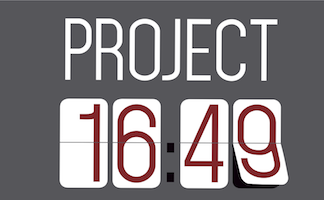About
The 16 hours and 49 minutes between school ending one day and beginning the next is a lonely, frightening and dangerous time for our unaccompanied homeless youth – those who cannot live, or live safely, with a parent or legal guardian, and do not have a fixed overnight residence. Most ‘couch surf’ – staying with extended family or friends, often moving weekly or even daily. Others sleep in cars, abandoned buildings and parks.
Project 16:49 is a local non-profit organization serving Rock County’s unaccompanied homeless youth ages 14 to 21. We believe every young person deserves an opportunity to succeed. To that end, Project 16:49 ensures access to the services and support these students need to remain in school, graduate and become self-sufficient adults. See our Program Summary below for more information.
Who We Serve
Our target population is unaccompanied homeless youth who are enrolled (or eligible and willing to be enrolled) in a Rock County school district or a GED program. Every year, Rock County school districts identify more than 300 youth who meet the criteria of being both homeless (not having an overnight residence that is fixed, regular or adequate) and unaccompanied (not in the physical custody of a parent or guardian). Predictably, graduation rates for this population are low (75%).
The reasons for these students’ situations are varied, but most often include serious family conflict, abuse or neglect, domestic violence, parental rejection or abandonment, parental incarceration or criminal behaviors, and/or parents with untreated addictions or mental health problems. The majority of this population come from a background of poverty.
Among the youth we serve:
- 60% have been physically or sexually abused
- 1/3 have spent time in foster care
- 42% of our girls are survivors of human trafficking
- 92% of our Transitional Living Program residents graduate high school
- 94% improve their self-sufficiency score in 2 or more of 5 key areas
If you know a youth in need of assistance, please make a referral.
Program Summary
Project 16:49 provides basic needs assistance and referrals, including:
- Emergency food and Foodshare enrollment
- Identifying safe housing options
- Hygiene supplies, school supplies, clothing. We distribute 150+ filled backpacks in September, and 600+ hygiene bags throughout the year.
- Obtaining birth certificates and social security cards, so youth can access assistance and employment
- Accessing physical and/or mental health care and health insurance
- Referrals to other appropriate programs, based on individual situations and needs
We also offer case management to youth who are interested in working toward specific goals or have a very high level of need (and are willing to accept help). Project 16:49’s case managers, in conjunction with the schools’ homeless liaisons and applicable host families or house parents, meet with each participant regularly to support and monitor his/her progress.
Project 16:49 operates two Transitional Living Program (TLP) homes for youth ages 17-21, one for females and one for males. Both homes can accommodate 8 residents. Residents can stay up to 18 months. While there, youth learn and develop important independent living / life skills, including:
- Budgeting, saving money
- Meal planning and cooking
- Managing their own health care
- Getting and keeping a job
- Finding an apartment and being a good tenant
- Personal safety
- Developing a support network
- Communication and coping skills
Project 16:49 youth will graduate from the program after they have completed the goals on their individual plans and are ready to live independently or with the support of an adult transitional living program—such as ECHO way or Salvation Army Pathways—or are able to reunite with parents or guardians. Youth who graduate from Project 16:49 may continue to participate in Project 16:49 workshops and activities, and will be encouraged to continue communicating with Project 16:49 staff. Project 16:49 will conduct a formal exit interview to gain insight from the youth about their experiences with the program and ways in which it can be improved. Formal follow-up surveys/visits will be conducted at 3, 6, and 12 months following program completion.
